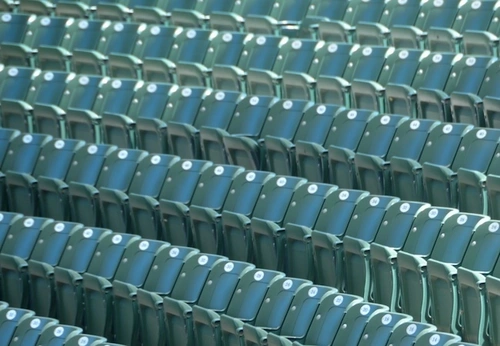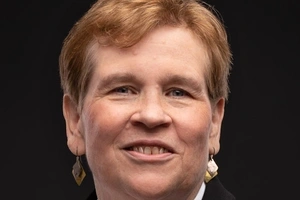Faculty Expert

This has been a bleak year in the empty stadiums on America’s college campuses. First, the pandemic cancelled games, and then the lingering shutdowns and postponements threatened the model for college sports.
Penn GSE’s Karen Weaver is an expert on the role of sports at colleges at every level. In addition to her research, she has previously served as an athletics administrator at Division I and Division III universities, and is a member of the NCAA Committee on Athlete Biometric Data.
We asked Weaver how COVID-19 might reshape the college sports landscape, and how she helps college leaders prepare to oversee athletics departments.
Question: The fate of college athletic programs and college athletes has never been more precarious. We’re seeing seasons rescheduled or postponed, and teams being permanently eliminated, even at high-profile universities. As someone who studies athletics, what are you watching for?
Answer: I’m paying attention to the dynamics between public health, the politics of 2020, and who has the power to get done what they want to get done. And how that power to act is limited within the conference and NCAA structures.
Earlier this fall, I interviewed the president of a Division III college for my podcast. Even in the middle of August, his school’s conference was ready to run all fall sports, including football. He said the NCAA stepped in and put the brakes on, because they said that’s really not what we’re doing in Division II and Division III.
That’s one set of conversations. There’s another set of conversations in the Power 5 football conferences, which have staggered the start of their seasons. And yet another set of conversations in the conferences that are centered on basketball.
There is no one-size-fits-all rule for college sports or college leaders.
Q: Few college teams earn money for their schools, at least based on ticket sales, media revenues, or sponsorships. With the pandemic slashing revenue—both at schools and the NCAA—what does the future hold for non-revenue sports?
A: I think we have to recognize the role these students play and what they bring to campus. In Division III for example, students who play sports bring significant tuition to campus because there are no scholarships. They enhance the opportunities for the college to have a vibrant student body.
But when you get to the Division I level, the number of schools where ticketing, merchandise, and media revenues alone sustain a broad-based program is dwindling. Really, you’re down to about four schools that can say that. Everybody else is playing catchup, but we have to admit it’s just unsustainable. We can’t keep thinking the money will keep rolling in if we just work a bit harder.
Whether Olympic and non-revenue sports at the highest level are sustainable is truly in question.
Q: What might that mean for brand name colleges that are used to having more than 20 varsity sports playing at a national level?
A: There’s a push by some groups for what they call regionalization and federationalism. Regionalization would mean being more local—stop spreading conferences out across multiple time-zones. Federationalism means a university would federate individual sports teams based on the appropriate amount of support you can give them. A college might play football the same way it does now, but their field hockey team might not travel more than few hours’ drive from campus during the regular season, for example.
A lot would have to be worked out before we could see that kind of shift, but there are ideas on the table. The biggest reason we haven’t seen schools scale back before is the desire to chase NCAA Division I basketball tournament revenue, or football bowl game revenue.
Q: Since television money transformed Division I athletics over the last 30 years, programs have used amenities to differentiate themselves in recruiting battles. If colleges are able to offer less because of a cash crunch, will something take its place?
A: I think athletic departments are going to create incubators for athletes to come in and develop their own brands to earn money on their name, image, and likeness as NCAA rules open up. They’ll give them access to experts who will help athletes develop a brand, an image, and come up with potential targets. That’s going to be the very basic. And it’s already starting to happen with a few companies.
This is going to be a whole new level of recruiting. We’re not just saying come here because we have a nice locker room. Come here because we have something tangible beyond the field to offer.
Q: This junction of high-level sports and higher education is unique to the United States. For many college administrators without an athletic background, it can be a challenge. Why have you made this a focus, in both your classes and your scholarship?
A: Many people who aspire to advance in higher education leadership will, at some point, have more and more connection to the athletics department. I’ve seen from my own classes that senior leaders don’t feel they have enough experience to have confidence adding their voice to the discussion. That’s a problem, because their voice would bring an important perspective.
Just because you weren’t an athlete or a coach or even a big fan doesn’t mean you don’t have something to add. Ultimately, this is about what athletics brings to your campus, your alumni, your student body. Understanding that basic framework is every senior leader’s job, not just the president’s.
There are only five jobs on most campuses that get information directly from the NCAA: the athletic director, the president, the faculty athletics report, the compliance officer, and the senior woman administrator. That’s it. If you fall outside those five positions, you get nothing from the NCAA. So where are you supposed to learn this stuff, unless you are thrown into one of those roles and have to learn on the fly? That’s the gap I want to fill.







